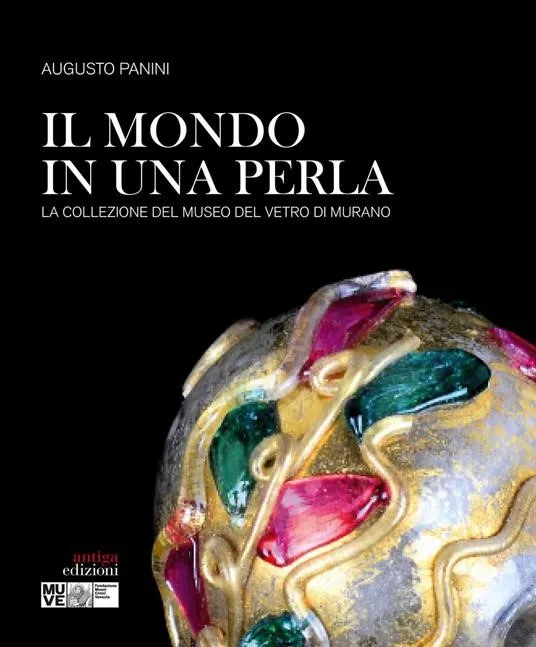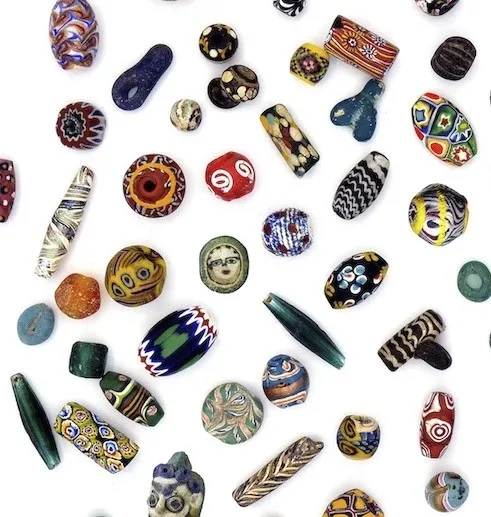A book on the history of glass pearls. Vistosi, in collaboration with the Murano Glass Museum, delves into the history and production of these jewels, part of which are kept within the museum’s display cases in a dedicated room, stemming from a long cataloging effort that began in the 1300s and continues to this day.
The Murano Glass Museum houses an important collection of lampworked pearls among its treasures. The specificity of the material and the extraordinary novelty of these artifacts required the dedication and expertise of someone who loved pearls so much that they invested almost four years of their life in studying and meticulously analyzing not only the collection but also its internal intricacies. This effort led to a series of discoveries, all compared and verified within the historical-production intricacies of this material.
The title of the volume stems from the recognition of the pearl as a polyhedral cosmos where hands, especially feminine ones, have translated a concept of grace and perfection, giving life, each time, to a perfect and ideal world. In this volume, you will find photographs to capture the eternity of the aesthetic and chromatic message, as well as detailed descriptions to grasp the hidden production reality of each pearl: an important chapter in the history of Murano and Venice. The choice to also provide the opportunity to understand the technical aspect and specific terminology is a strong point because pearls are a complex world that must be made accessible to everyone.


From glass rods also derives the production of pearls, known since ancient times, first in Egypt and then in Roman times. The first pearls produced in Venice date back to the fourteenth century and, for centuries, they constituted precious goods for the Serenissima, traded and exported to Africa, the Americas, and India. Based on the production technique, Venetian pearls can be seed beads, rosettes, or lampworked beads. Seed beads, documented in Murano since the fourteenth century, are monochrome, very small, and are “industrially” obtained from thin glass rods drilled through. They are also usable for embroidery and various compositions. Rosette beads, invented in the fifteenth century, derive from drilled composite rods, like murrine, made of multiple polychrome layers. Lampworked beads, on the other hand, date back to the seventeenth century, obtained from a non-drilled (solid) rod, heated by flame (“lamp”), and poured onto a manually rotated metal wire, with endless variations of possible additions, effects, and colors.
During the nineteenth-century crisis in Murano, pearl production was the only industry to remain flourishing and expand: interesting and colorful sample books from some of the most active factories are displayed here, including those of Franchini and Domenico Bussolin, who was also a specialist in filigree. However, the rich collections of the museum allow for an excursion through the entire history and typologies of Venetian pearls, a genre particularly significant and deeply connected to the history and traditions of the city, especially to that of female labor. This includes the creativity of many Murano women who have always been present in this sector, not to mention the skilled Venetian pearl stringers (“impiraresse”) who, for centuries, sat outdoors in alleyways and squares with their box (“sessola”) full of seed beads on their knees, characterizing the landscape of a vibrant, populous Venice.
© 2024 Vetreria Vistosi srl
Via Galileo Galilei, 9-9/A-11
31021 Mogliano Veneto – TV (Italy)
T. +39 041 5903480 / +39 041 5900170
Email: vistosi@vistosi.it
P.IVA IT02497840278
Company register 01808840266
REA registration number TV- 170728
Share Capital 100,000.00 €
© 2024 Vetreria Vistosi srl
Via Galileo Galilei,9-9/A-11
31021 Mogliano Veneto – TV (Italy)
T. +39 041 5903480 / +39 041 5900170
vistosi@vistosi.it
P.IVA IT02497840278
Notifications